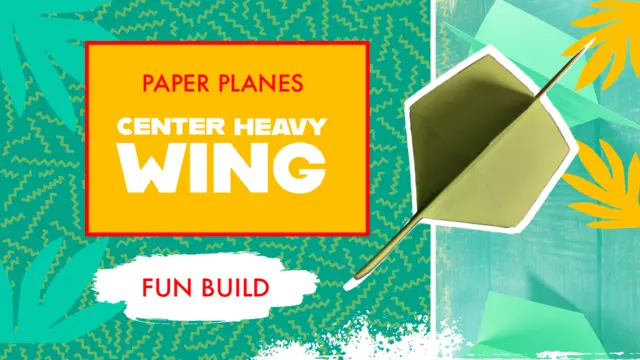Meet the Fun Glider, a plane that truly lives up to its name. 🎉 With only a few simple folds, this glider is designed to sail gently through the air with almost no effort. It’s the perfect balance of light and steady, ideal for slow, relaxed flights across the room or down a hallway. Built to forgive even the roughest of throws, the Fun Glider practically floats on air, making it an instant favorite for beginners or anyone wanting a plane with endless glide and low stress.
If you are new here, consider subscribing to your free newsletter to get new plans delivered to your inbox every week!
And here are the detailed, step-by-step instructions. Feel free to refer to the video when it gets harder to follow along. Click on the image thumbnail to see a higher resolution image.
| Step | Image | Instruction |
|---|---|---|
| 0 |  | Start with a rectangular piece of paper. |
| 1 |  | Fold it in half along the long edge. |
| 2 |  | Open it up. |
| 3 |  | Pick up the right half and make a fold such that the right edge aligns with the central crease. |
| 4 |  | Repeat it on the other side. |
| 5 |  | Make a diagonal fold on the right side starting from the top and ending at the crease point. |
| 6 |  | Repeat the fold on the other side. |
| 7 |  | Pick up the right corner and fold it such that it aligns with the diagonal of the top layer. |
| 8 |  | Repeat the fold on the other side. |
| 9 |  | Fold the top corner down, forming a triangle such that the edges of the triangle passes through the intersection point in the bottom layers. |
| 10 |  | Unfold. |
| 11 |  | Treat the central crease as mountain fold and fold it backwards. |
| 12 |  | Turn the paper 90 degrees anti-clockwise and make a squash fold on the left corner. The squash fold creates a diamond plane perpendicular to the rest of the paper. |
| 13 |  | Fold the top part of the diamond down to form an inverted triangle. |
| 14 |  | Fold the squash fold backwards so that perpendicular planes are parallel to the rest of the paper. |
| 15 |  | Fold the wing starting at the nose where the squash fold was made and keeping the fold parallel to the central crease. |
| 16 |  | Flip the paper. |
| 17 |  | Fold the wing on the other side identical to the previous wing. |
| 18 |  | Fold the vertical stabilizer starting a few centimeters from the bottom corner, keeping the crease parallel to the central crease. |
| 19 |  | Flip the paper and fold the vertical stabilizer on the other side. |
| 20 |  | Open up the wings such that they are flat and the stabilizers perpendicular to them. |
Here is a quick run through of the steps.

Enjoying the ride? Subscribe to our free newsletter and get a fresh new plane design delivered to your inbox every week—no boarding pass required!



Use the share button below if you liked it.
It makes me smile, when I see it.